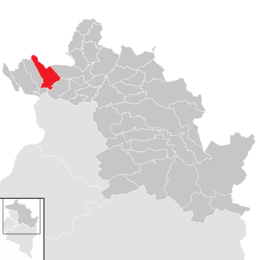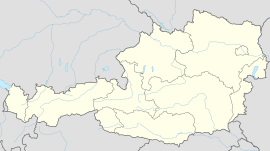Hard, Austria facts for kids
Quick facts for kids
Hard
|
||
|---|---|---|
 |
||
|
||

Location in the district
|
||
| Country | Austria | |
| State | Vorarlberg | |
| District | Bregenz | |
| Area | ||
| • Total | 17.46 km2 (6.74 sq mi) | |
| Elevation | 398-400 m (−914.3 ft) | |
| Population
(2018-01-01)
|
||
| • Total | 13,495 | |
| • Density | 772.91/km2 (2,001.8/sq mi) | |
| Time zone | UTC+1 (CET) | |
| • Summer (DST) | UTC+2 (CEST) | |
| Postal code |
6971
|
|
| Area code | 05574 | |
| Vehicle registration | B | |
| Website | www.hard.at | |
Hard is a town located in the western part of Vorarlberg, which is Austria's westernmost state. It sits right on the southern shores of Lake Constance, a large and beautiful lake.
Hard is known for its fun places like the Strandbad, which is a lakeside beach area, and the Grünerdamm. It also has a popular skatepark where people can practice their tricks.
Contents
Facts About Hard
Hard covers an area of about 17.46 square kilometers (6.75 square miles). The town is located between two rivers, the Bregenzer Ach and the Alpine Rhine. It also shares a border with Bregenz, which is the capital city of the Vorarlberg state.
A Look at Hard's History
Hard has a long and interesting history. In the 7th century, a group of people called the Alemanni settled near a place called Mittelweiherburg.
Around the year 1200, many trees were cleared near Lake Constance to make space for a new village. This village was named Hard, which means "forest" in Old High German. The first official mention of Hard as a community was in a document from Pope Innocent IV in 1249. This document was sent to the Mehrerau monastery.
In 1794, Samuel Vogel from Alsace started the first textile factory in Hard. This was an important step for the town's economy. Later, in 1802, common lands known as "Allmenden" were divided into private fields, pastures, and forests. In 1997, a special museum dedicated to textile printing was opened in Mittelweiherburg.
The Story of the Schwabenkinder
From the 17th century until the early 1900s, many poor farming families in Vorarlberg faced tough times. They often sent their children to work as seasonal laborers in Swabia, a region in Southern Germany. These children were known as "Schwabenkinder," which means "Swabian children." The journey and work they did was called "Schwabengehen."
Hard's Coat of Arms
Every town has a special symbol, and Hard's is its coat of arms. It shows two trees and a sailboat. These symbols represent important activities from Hard's early days: logging (cutting down trees) and fishing on Lake Constance.
Getting Around Hard
Hard has its own train station, called Hard-Fussach railway station. This station serves both Hard and the nearby town of Fußach. It is part of the St. Margrethen–Lauterach line.
The station is served by the S3 and R5 regional train services. These trains are part of the Vorarlberg S-Bahn system and are operated by the Austrian Federal Railways (ÖBB).
Hard's Population Over Time
The number of people living in Hard has changed a lot over the years. Here's a look at how the population has grown:
| Historical population | ||
|---|---|---|
| Year | Pop. | ±% |
| 1869 | 2,305 | — |
| 1880 | 2,085 | −9.5% |
| 1890 | 2,183 | +4.7% |
| 1900 | 2,914 | +33.5% |
| 1910 | 3,637 | +24.8% |
| 1923 | 3,049 | −16.2% |
| 1934 | 3,387 | +11.1% |
| 1939 | 3,488 | +3.0% |
| 1951 | 4,788 | +37.3% |
| 1961 | 6,671 | +39.3% |
| 1971 | 8,887 | +33.2% |
| 1981 | 10,103 | +13.7% |
| 1991 | 10,747 | +6.4% |
| 2001 | 11,471 | +6.7% |
| 2011 | 12,546 | +9.4% |
See also
 In Spanish: Hard (Austria) para niños
In Spanish: Hard (Austria) para niños




